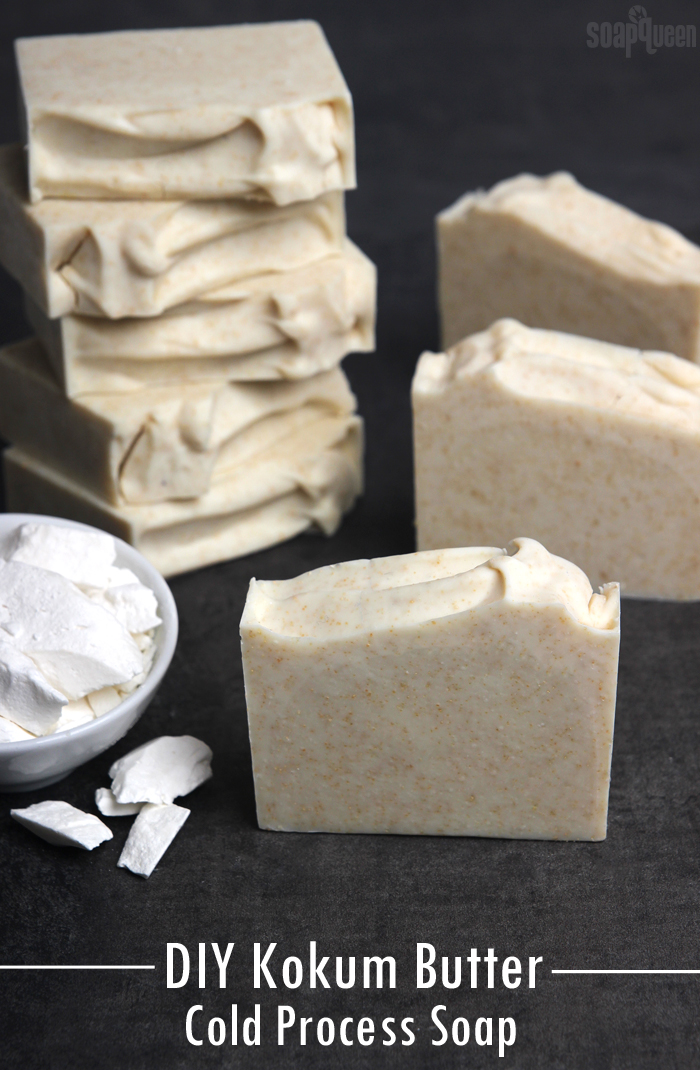
We are excited to introduce kokum butter to the Bramble Berry line! If you’re unfamiliar with kokum butter, it’s a hard butter that is most comparable to cocoa butter. Kokum butter melts slightly above body temperature and is known for its light, non-greasy feel on the skin. In cold process soap, kokum butter adds firmness. Read more about kokum butter here. Soapers have also found that kokum butter adds a bit more lather than cocoa butter; Amy Warden of Great Cakes Soapworks has a great kokum butter lather test here.
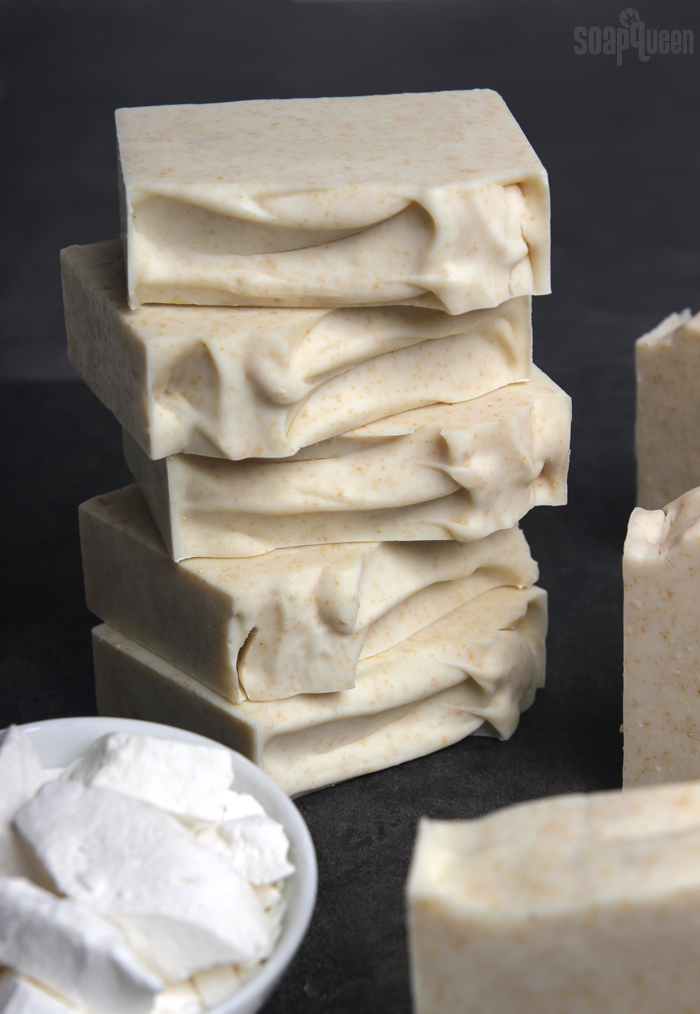
For this recipe, I kept things simple to let the creamy texture of the soap stand out. It’s scented with eucalyptus essential oil for a refreshing scent. The smell is great during the cold winter months. Titanium dioxide is added to lighten the color, while ground pumpkin seeds add exfoliation. Because this recipe contains plenty of olive oil, a small water discount helps it pop out of the mold a bit quicker and prevents glycerin rivers. Learn more about water discounting in this post.
Below, you can see one of the test batches for this soap that I made on Facebook Live. The recipe has been tweaked a little bit, but it gives you an idea of what this project looks like in action!
What You’ll Need:
10″ Silicone Loaf Mold
0.7 oz. Castor Oil (2%)
8.5 oz. Coconut Oil (25%)
1.7 oz. Kokum Butter (5%)
23.1 oz. Olive Oil (68%)
4.7 oz. Sodium Hydroxide Lye
10.3 oz. Distilled Water (8% water discount)
2 oz. Eucalyptus Essential Oil
Titanium Dioxide
3 Tbsp. Ground Pumpkin Seeds

Click here to add everything you need for this project to your Bramble Berry shopping cart!
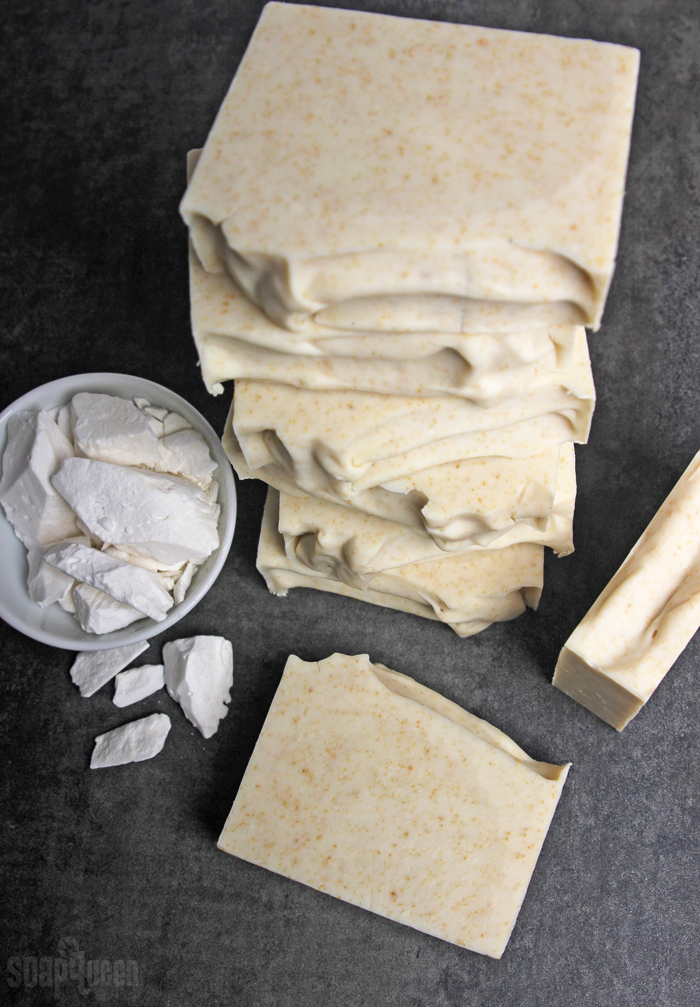
If you’ve never made Cold Process soap before, stop here! I highly recommend checking out our FREE four part SoapQueen.tv series on Cold Process Soapmaking, especially the episode on lye safety. And if you’d rather do some reading, Bramble Berry carries a wide range of books on the topic, including my newest book, Pure Soapmaking. You can also checkout the digital downloads for that instant gratification factor.
SAFETY FIRST: Suit up for safe handling practices! That means goggles, gloves and long sleeves. Make sure kids, pets, and other distractions and tripping hazards are out of the house or don’t have access to your soaping space. Always soap in a well-ventilated area.
COLOR PREP: To ensure that the titanium dioxide blends smoothly into the soap batter, we recommend micronizing it before dispersing it in oil. Please note this is an optional tip but it does help with the titanium dioxide clumping in the soap. =) To micronize colorant, simply use a coffee grinder to blend the colorant to break up any clumps of color and prevent streaks of white from showing in the final soap. We like to use a coffee grinder that has a removable, stainless steel mixing area for easy cleaning. Disperse 1 teaspoon of titanium dioxide into 1 tablespoon of lightweight liquid oil, like sweet almond oil or sunflower oil. Use the mini mixer to help break up any clumps.
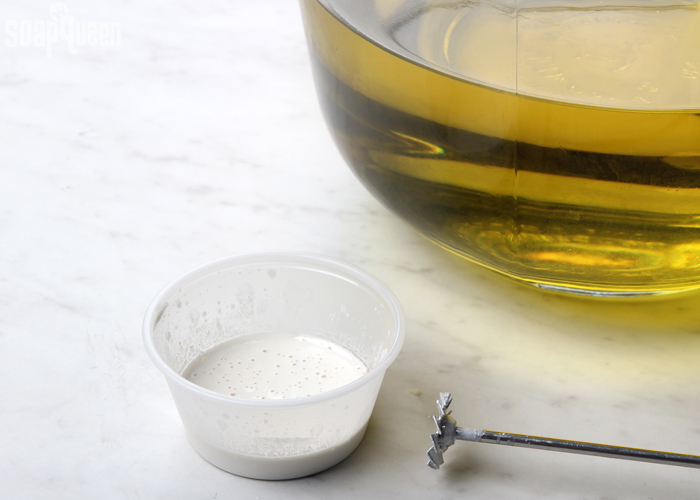 FRAGRANCE PREP: Measure 2 ounces of Eucalyptus Essential Oil into a glass, essential oil safe container. Set aside.
FRAGRANCE PREP: Measure 2 ounces of Eucalyptus Essential Oil into a glass, essential oil safe container. Set aside.
ONE: Slowly and carefully add the lye to the water and gently stir until the lye has fully dissolved and the liquid is clear. Set aside to cool.
TWO: Combine and fully melt the coconut oil, olive oil, castor oil, and kokum butter. Once the lye water and the oils have cooled to 130 degrees or below (and are ideally within 10 degrees of each other), add the lye water to the oils and stick blend until thin trace. If you’d like a harder bar of soap that releases faster from the mold, you can add sodium lactate to the cooled lye water. Use 1 teaspoon of sodium lactate per pound of oils in the recipe. For this recipe, you’d add about 2 teaspoons sodium lactate.
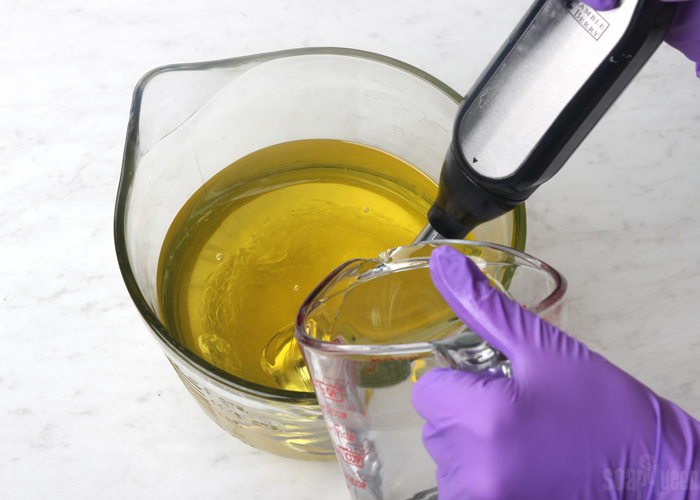
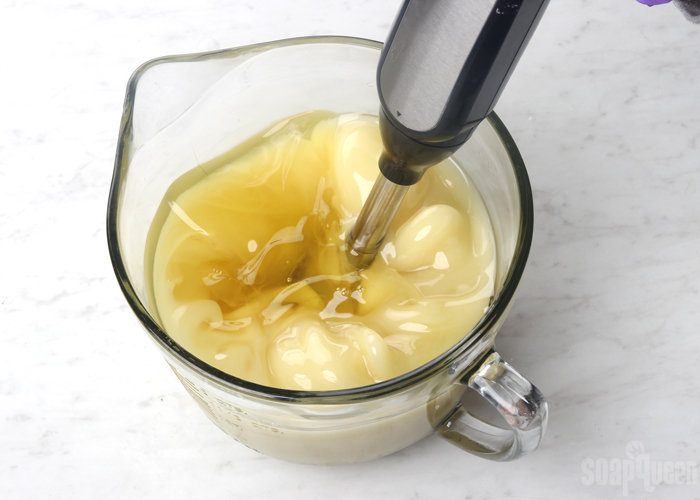
THREE: Once you have reached a thin trace, add all of the dispersed titanium dioxide and stick blend the colorant in.
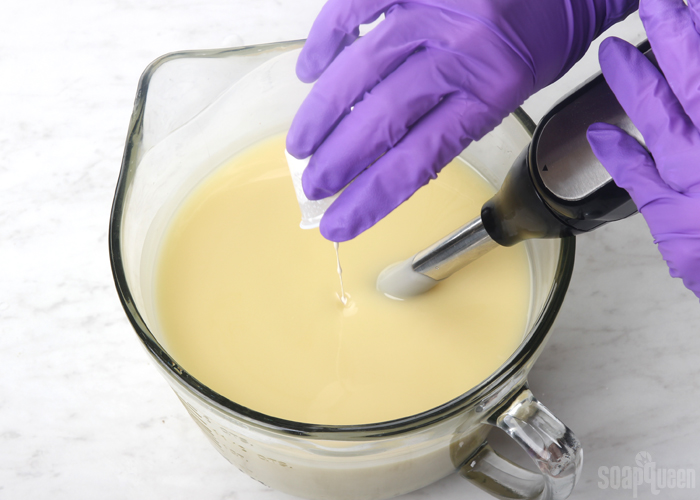
FOUR: Add the 2 ounces of eucalyptus essential oil into the batter and stick blend until completely combined.
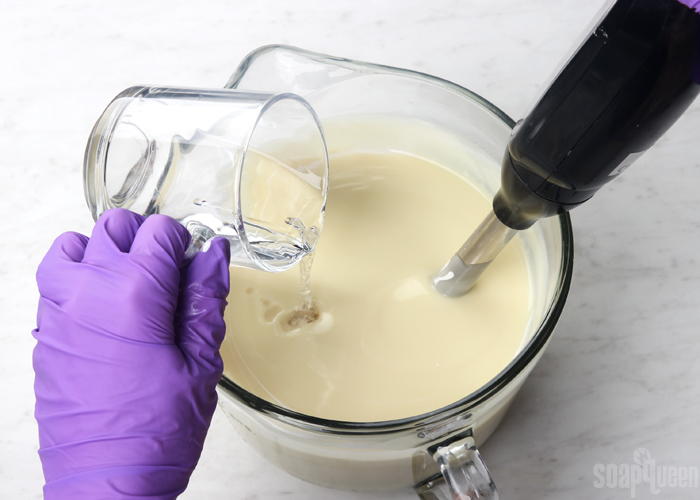
FIVE: Continue stick blending until you reach a medium to thick trace. Add the ground pumpkin seeds and use a whisk to combine.
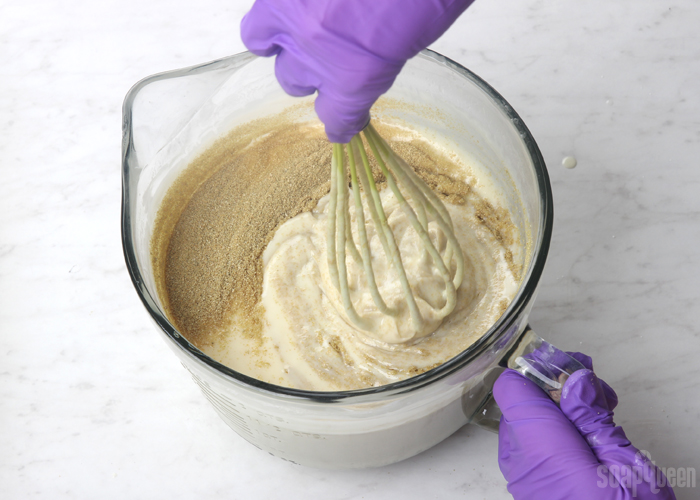
SIX: Once completely combined, pour the soap into the mold and tap firmly on the counter to get rid of bubbles.
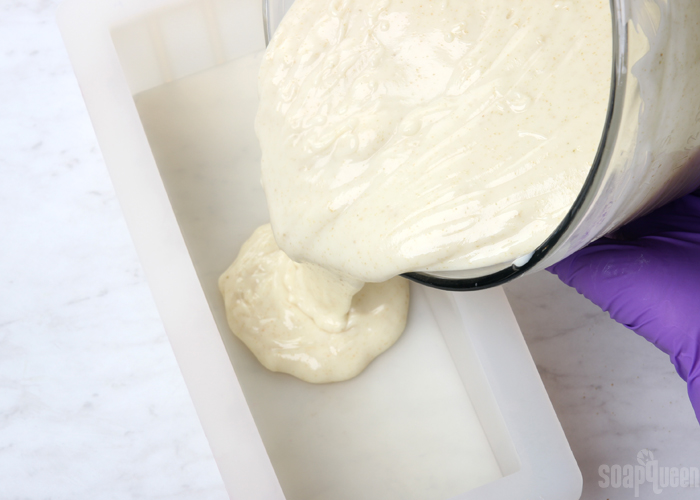
SEVEN: Use a spoon to texture the top of the soap. I used a “wave” motion in the soap to create a peak on one side. Feel free to texture the soap however you like – there is no right or wrong way! If you find that the soap is not quite thick enough to hold its shape, let it sit in the mold for several minutes to firm up, then texture the top.
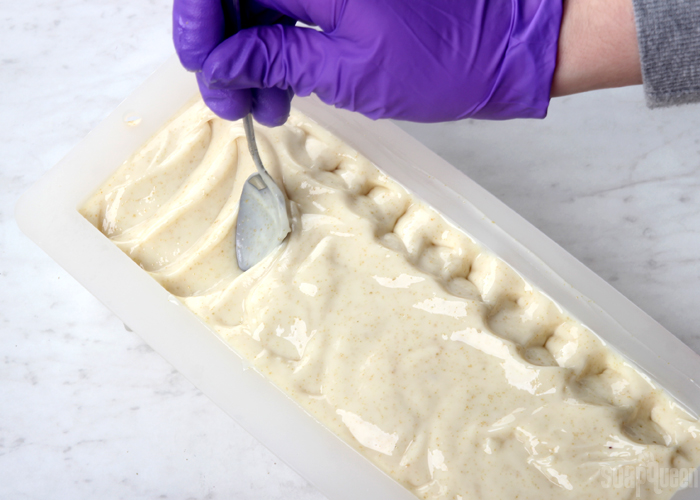 EIGHT: Spritz the top of the soap with 99% isopropyl alcohol to help prevent soda ash. Leave at room temperature. Because kokum butter is a hard butter, you may want to keep eye on the soap. If it becomes warm and goes through gel phase, it can crack (I got a few). If this happens, stick the soap in the freezer to cool it down and prevent larger cracks. Allow the soap to sit in the mold for about 3 days (longer if you did not use sodium lactate). Unmold and cut into bars. Allow the bars to cure for 4-6 weeks. Because this soap contains a large amount of olive oil, I recommend curing the soap for the full 6 weeks. Enjoy!
EIGHT: Spritz the top of the soap with 99% isopropyl alcohol to help prevent soda ash. Leave at room temperature. Because kokum butter is a hard butter, you may want to keep eye on the soap. If it becomes warm and goes through gel phase, it can crack (I got a few). If this happens, stick the soap in the freezer to cool it down and prevent larger cracks. Allow the soap to sit in the mold for about 3 days (longer if you did not use sodium lactate). Unmold and cut into bars. Allow the bars to cure for 4-6 weeks. Because this soap contains a large amount of olive oil, I recommend curing the soap for the full 6 weeks. Enjoy!
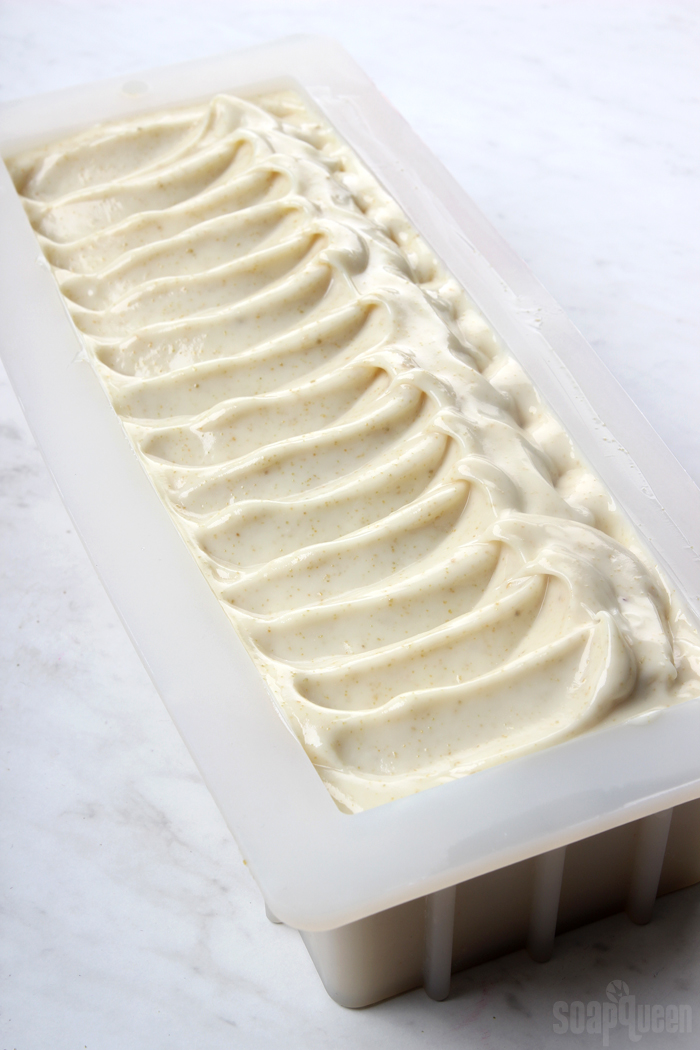
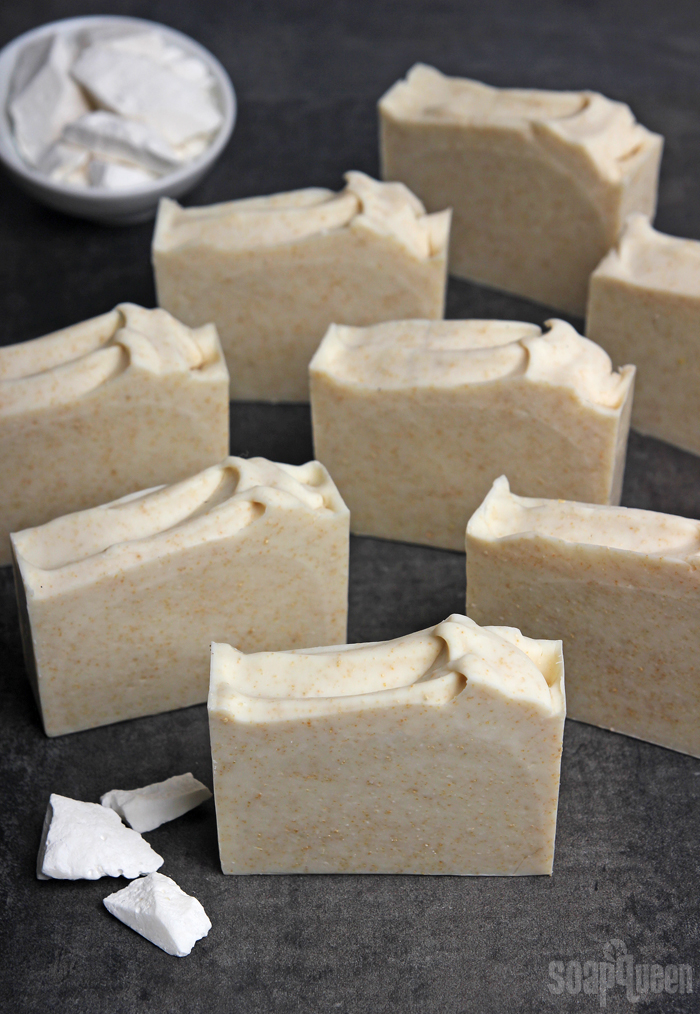
- 10" Silicone Loaf Mold
- 0.7 oz. Castor Oil (2%)
- 8.5 oz. Coconut Oil (25%)
- 1.7 oz. Kokum Butter (5%)
- 23.1 oz. Olive Oil (68%)
- 4.7 oz. Sodium Hydroxide Lye
- 10.3 oz. Distilled Water (8% water discount)
- 2 oz. Eucalyptus Essential Oil
- Titanium Dioxide
- 3 Tbsp. Ground Pumpkin Seeds
- FRAGRANCE PREP: Measure 2 ounces of Eucalyptus Essential Oil into a glass, essential oil safe container. Set aside.
- Slowly and carefully add the lye to the water and gently stir until the lye has fully dissolved and the liquid is clear. Set aside to cool.
- Combine and fully melt the coconut oil, olive oil, castor oil, and kokum butter. Once the lye water and the oils have cooled to 130 degrees or below (and are ideally within 10 degrees of each other), add the lye water to the oils and stick blend until thin trace. If you’d like a harder bar of soap that releases faster from the mold, you can add sodium lactate to the cooled lye water. Use 1 teaspoon of sodium lactate per pound of oils in the recipe. For this recipe, you’d add about 2 teaspoons sodium lactate.
- Once you have reached a thin trace, add all of the dispersed titanium dioxide and stick blend the colorant in.
- Add the 2 ounces of Eucalyptus Essential Oil into the batter and stick blend until completely combined.
- Continue stick blending until you reach a medium to thick trace. Add the ground pumpkin seeds and use a whisk to combine.
- Once completely combined, pour the soap into the mold and tap firmly on the counter to get rid of bubbles.
- Use a spoon to texture the top of the soap. I used a “wave” motion in the soap to create a peak on one side. Feel free to texture the soap however you like – there is no right or wrong way! If you find that the soap is not quite thick enough to hold its shape, let it sit in the mold for several minutes to firm up, then texture the top.
- Spritz the top of the soap with 99% isopropyl alcohol to help prevent soda ash. Leave at room temperature. Because kokum butter is a hard butter, you may want to keep eye on the soap. If it becomes warm and goes through gel phase, it can crack (I got a few). If this happens, stick the soap in the freezer to cool it down and prevent larger cracks. Allow the soap to sit in the mold for about 3 days (longer if you did not use sodium lactate). Unmold and cut into bars. Allow the bars to cure for 4-6 weeks. Because this soap contains a large amount of olive oil, I recommend curing the soap for the full 6 weeks. Enjoy!
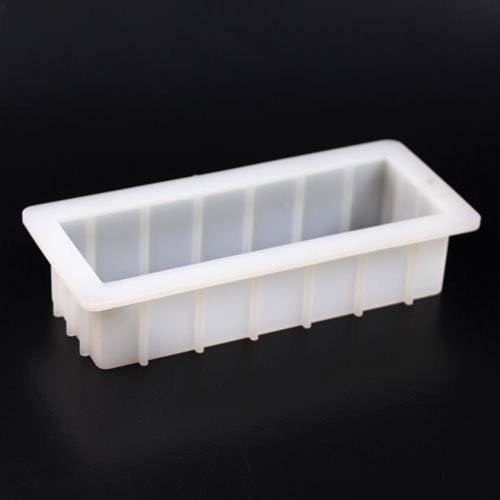
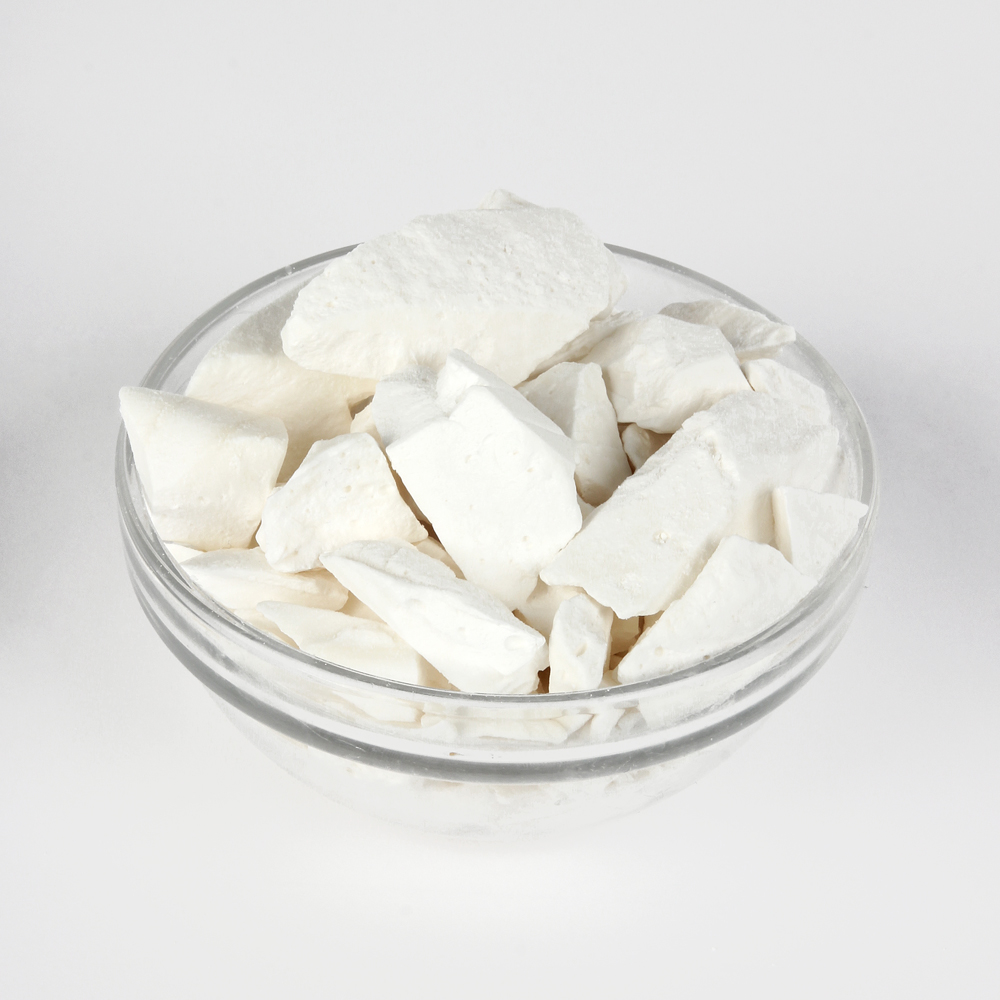
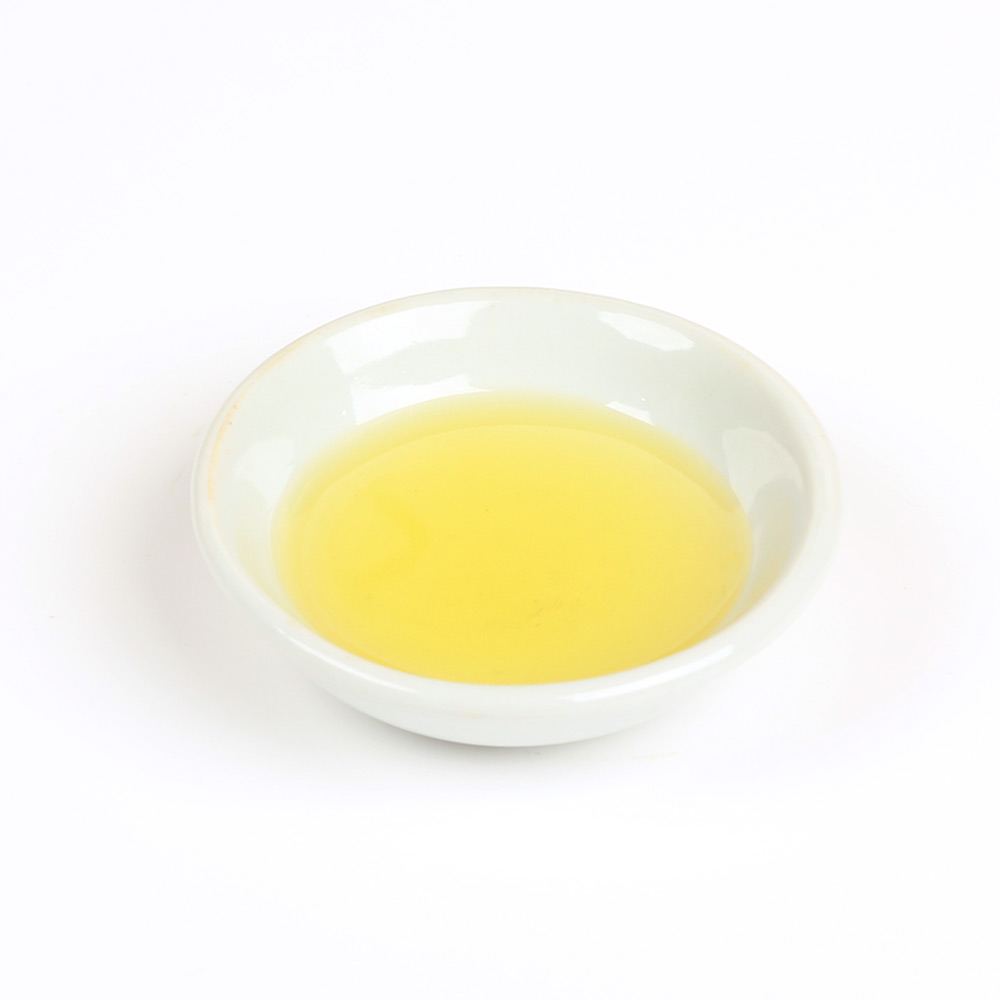
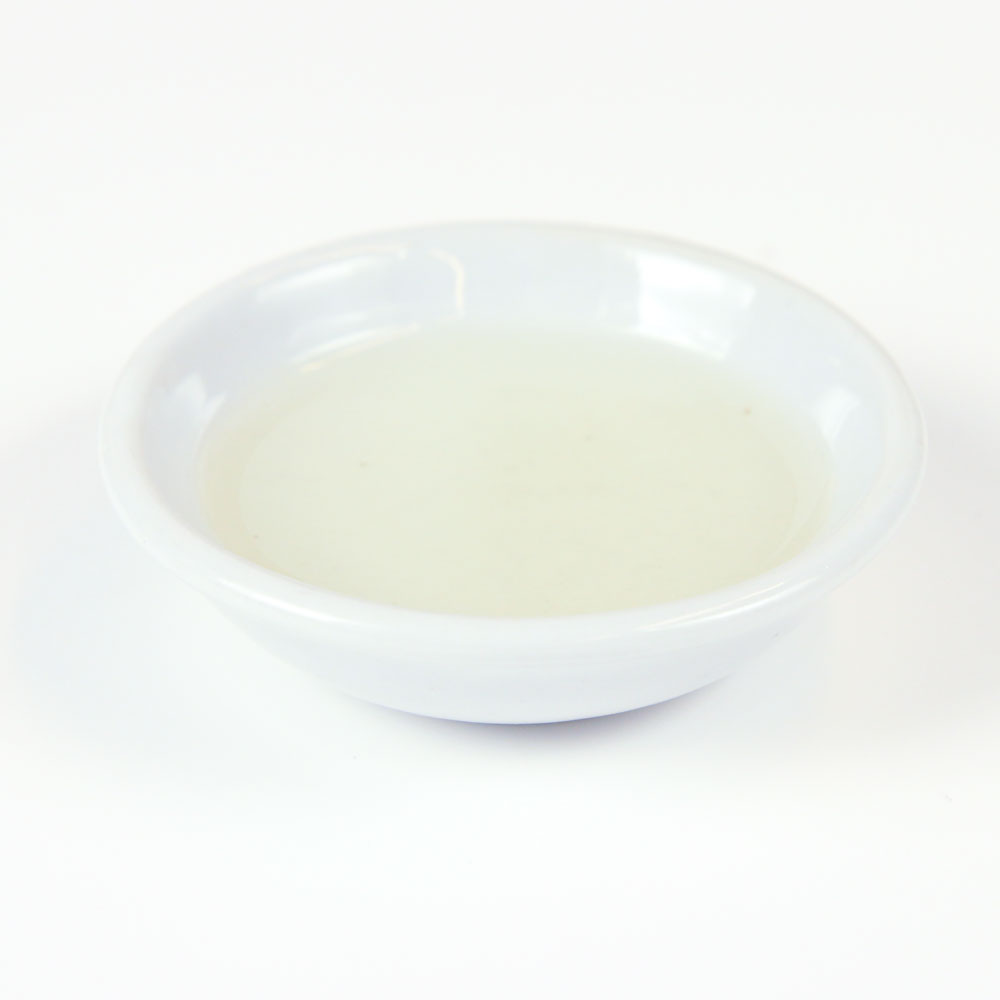





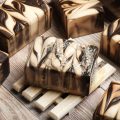

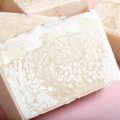
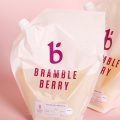
2oz of essential oil seems really a lot, and expensive. Can i just put my normal 90 drops instead or remove it completely, or replace it with 90 drops of lavender maybe?
We always go by weight as that tends to be the most accurate way of doing things. Drops are not an official unit of measurement and can give you inconsistent results. You can definitely omit the fragrance, or use a different one if you’d like, just be sure to check our fragrance calculator for a skin-safe recommendation.
On the ingredient list, it says nothing about rice bran oil. Yet, in your video, you mention rice bran oil. So is this recipe supposed to have it or not? I like to master batch my recipes but this one is confusing.
Thanks for pointing this out! Looks like it was a misspeak on our part. You can definitely add Rice Bran to this recipe if you would like. I would recommend at least 5% for a nice feeling in your bars!
I love this soap. I would like to make it last longer what can I change to do that.
You can add sodium lactate. Storing it so that it stays dry between uses helps a lot, too. This post has a bunch of great tips and ideas on how to make your soap last longer: https://www.soapqueen.com/bath-and-body-tutorials/tips-and-tricks/make-soap-last-longer-shower/
What if I don’t want to water discount?
You can use the full water amount if you like. Find that with our Lye Calculator: https://www.brambleberry.com/Pages/Lye-Calculator.aspx
I would recommend putting the soap in the freezer for 5-24 hours after it’s in the mold to prevent glycerin rivers: https://www.soapqueen.com/bath-and-body-tutorials/tips-and-tricks/river-runs-deep-explanation-glycerin-rivers/
It will also take longer to unmold. You’ll wait to wait about 3-5 days at least.
So is the full water amount 10.3 * .08%=11.2
Yes, that is correct.
Can I use sweet almond oil in place of olive oil? Also how much lye would i add to make a double batch?
Sweet almond oil is lighter than olive oil and we only recommend it up to 15% in your recipe. Instead, you can substitute rice bran or canola for the olive oil.
Rice bran oil: https://www.brambleberry.com/Rice-Bran-Oil-P4971.aspx
Canola oil: https://www.brambleberry.com/Canola-Oil-High-Oleic-P5548.aspx
Once you substitute your oil and multiply it by 2 to double it, run it through the Lye Calculator to make sure your lye and water amounts are correct: https://www.brambleberry.com/Pages/Lye-Calculator.aspx
Can I grind raw pumpkin seeds and use in this recipe?
Yes, you can do that. Try to grind them very fine so the exfoliation is more gentle.
I really wanted to add a color like a coral or even yellow. Will I still need the titanium dioxide pigment?
The soap itself is slightly yellow, so if you added yellow to it I don’t think you would need the titanium dioxide. If you want to add another color like coral, you may find the slight yellow tint to the batter affects that color. If you want a more true shade, you can add a bit of titanium dioxide to lighten the soap so the color is more true. Read more about that here: https://www.soapqueen.com/bath-and-body-tutorials/tips-and-tricks/how-to-get-vibrant-colors-in-soap/
And this post has more on working with titanium dioxide: https://www.soapqueen.com/bath-and-body-tutorials/tips-and-tricks/sunday-night-spotlight-titanium-dioxide/
-Kelsey with Bramble Berry
Hi Kelsey
This may be a “crazy” question, but can we substitute kokum with cocoa butter? Ive been looking for a good cocoa butter soap recipe! Thanks!
You can substitute cocoa for kokum in this recipe, that will work just fine. Just make sure to run that recipe through the Lye Calculator after any substitutions: https://www.brambleberry.com/Pages/Lye-Calculator.aspx
You may also like this simple cold process recipe made with cocoa butter: https://www.soapqueen.com/bath-and-body-tutorials/cold-process-soap/back-to-basics-creamy-orange-cold-process-tutorial/
-Kelsey with Bramble Berry
Can I use goat milk instead of water in this recipe?
Absolutely. Goat milk adds a nice creamy feeling to the bars. You can use all goat milk, or a combination of distilled water and goat milk. Just make sure to keep the milk cold so it doesn’t scorch. This post talks more about that: http://www.soapqueen.com/bath-and-body-tutorials/tips-and-tricks/how-to-add-lye-to-milk-for-cold-process-soap/
-Kelsey with Bramble Berry
I made this soap last week and while in mold it developed a crack right in the middle. I was disappointed. However, when I unmolded and cut them the crack was only superficial and all of my cut bars had no cracks in them! Yay! In the middle of them is a darker spot, assuming it’s from the gel phase. They are curing now and I am wondering if that dark spot in the middle will go away? I used a green color to go along with the eucalyptus and it looks very nice. Just hoping that the dark spot in the middle fades…
The dark spot may fade slightly, but won’t go away fully. It is called “partial gel,” meaning the middle got pretty hot but the outsides didn’t. It is still totally fine to use! It creates a unique look in the bar. To prevent that next time, you can pop it in the fridge or freezer for 5-24 hours. 🙂
Learn more about gel phase here: http://www.soapqueen.com/bath-and-body-tutorials/tips-and-tricks/gel-phase/
-Kelsey with Bramble Berry
Loved it.
I love this. Very helpful for me. Thanks for sharing.
You’re welcome Maira, so glad you love it! 🙂
-Kelsey with Bramble Berry
I haven’t try raw kokum butter before but after reading your blog I am gonna try this but can you please suggest I have oily skin does this product will work for me?looking forward to get a reply soon…Thanks in advance
This recipe has coconut and castor oil, which are both nice and cleansing! However, it also has a lot of moisturizing olive oil. I would recommend making a small test batch to see what you think. If you want a more cleansing recipe, you can increase the coconut oil to 33% and decrease the amount of olive oil. 🙂
Learn more about formulating cold process recipes here: http://www.soapqueen.com/bath-and-body-tutorials/tips-and-tricks/formulating-cold-process-recipes/
-Kelsey with Bramble Berry
Hi,
Could I use lots of lather quick mix and add the kokum butter? If I can, how much quick mix would I use? Thank you,
Natalie
You can use the Quick Mix! However, you will need to calculate separate lye and liquid amounts for the kokum butter. You can use the same amount of kokum butter in this recipe and then the rest can be Quick Mix. So, run the 1.7 oz. of kokum butter through the Lye Calculator, then the Quick Mix. Combine those lye and water amounts and make the soap like normal. 🙂
Lye Calculator: https://www.brambleberry.com/Pages/Lye-Calculator.aspx
Learn more in this post on Quick Mixes: https://www.soapqueen.com/bath-and-body-tutorials/tips-and-tricks/sunday-night-spotlight-quick-mixes/
-Kelsey with Bramble Berry
Hi. thank you. Would you also recommend a water discount? Or just use the amounts shown in calculator?
Oh, I see. I don’t have to do a water discount because using the quick mix I am not using as much olive oil. Thank you Kelsey.
Although I didn’t do this design or color, I did purchase and try kokum butter at 5.9% in cold process. I did a three color infinity swirl. Unfortunately, it was NOT my best looking bar and I had high hopes. However, the kokum butter performed well and I’m happy with it. I will always keep some on hand for an occasional treat. If you are interested, it on youtube under theorgelmeister. Just remember, it is NOT my best looking soap!
That’s awesome, glad you gave the kokum butter a try! It feels so nice on the skin. 🙂
-Kelsey with Bramble Berry
very nice recipe…but the kokum butter seems to be processed …can we use raw kokum butter? (which is faint orange in colour) ?
We haven’t tried raw kokum butter so I’m not entirely sure. I think it should be fine though! You may want to make a small test batch to see how it works in this recipe. 🙂
-Kelsey with Bramble Berry
Nice can I do this in Soap in Hot Process?
Thank You
You can! The main difference is you’ll add the color, pumpkin seed and essential oil when it’s done cooking, rather than at trace. 🙂
Learn more about hot processing soap here: https://www.youtube.com/watch?v=mxTXwxbpzLM&t=133s
-Kelsey with Bramble Berry
I have been using Kokum butter in my face cream for several years now and i believe it does help with wrinkles and bounce back of your skin. I love it. Now I will try in some soap for my first try at lye soap.
We love it too! Have fun using it in soap Pamela. 🙂
-Kelsey with Bramble Berry